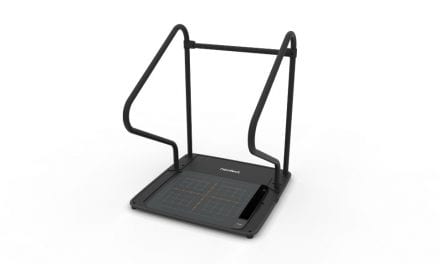Wake Forest Institute for Regenerative Medicine scientists (WFIRM) report they have developed a method to bioprint a type of cartilage that could someday help restore knee function damaged by arthritis or injury.
This cartilage, known as fibrocartilage, is designed to help connect tendons or ligaments or bones and is primarily found in the meniscus in the knee.
In their proof-of-concept strategy, the scientists have been able to 3D bioprint a hybrid tissue construct for cartilage regeneration by printing two specialized bioinks — hydrogels that contain the cells — together to create a new formulation that provides a cell-friendly microenvironment and structural integrity.
This work is done with the Integrated Tissue and Organ Printing System, a 3D bioprinter that was developed by WFIRM researchers over a 14-year period. The system deposits both biodegradable, plastic-like materials to form the tissue “shape” and bioinks that contain the cells to build new tissues and organs, a media release from Wake Forest Baptist Medical Center explains.
Their study was published recently in Chemistry of Materials.
“In this study, we have been able to produce a highly elastic hybrid construct for advanced fibrocartilaginous regeneration. “The results demonstrate that this bioprinted construct offers a versatile and promising alternative for the production of this type of tissue.”
— study author Sang Jin Lee, PhD, associate professor at WFIRM
Various Formulations Were Tested
For the study, Lee and the WFIRM research team tested various formulations and measured response to applied forces or stresses, the swelling ratio and the material strength and flexibility. One provided the proper cellular microenvironment to maintain the cells and helping them grow while the other bioink offered excellent biomechanical behavior and structural integrity.
The final formula of the two bioinks used were co-printed layer by layer to create a mesh-like pattern. The constructs were implanted into a small animal model for observation for 10 weeks and evaluated at intermittent time periods, showing proper function.
“A larger preclinical study will be needed to further examine the body’s response and the functional recovery of the joint with use of this regenerative medicine treatment.”
— James Yoo, MD, PhD, professor at WFIRM
“We have such a need for effective treatments and therapies to help patients deal with degenerative joint problems, especially the knee.
“This proof-of-concept study helps point our work in the right direction to someday be able to engineer this crucial tissue that is so important for patients.”
— Anthony Atala, MD, director of WFIRM
[Source(s): Wake Forest Baptist Medical Center, Science Daily]
Related Content:
Therapists Take 3D Printing to a New Dimension
3D Printing and Its Life-Changing Impact for Rehab Patients
No-Cost 3D-Printed Prosthetic Program Launches





